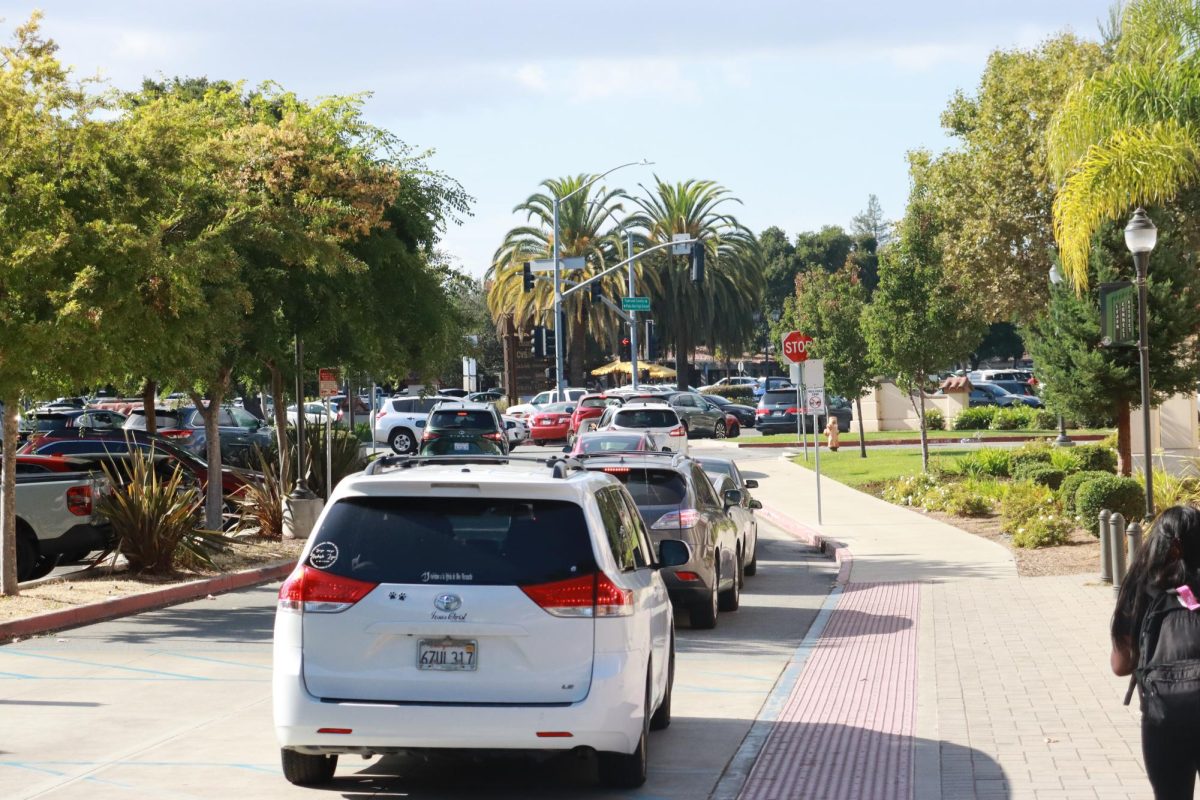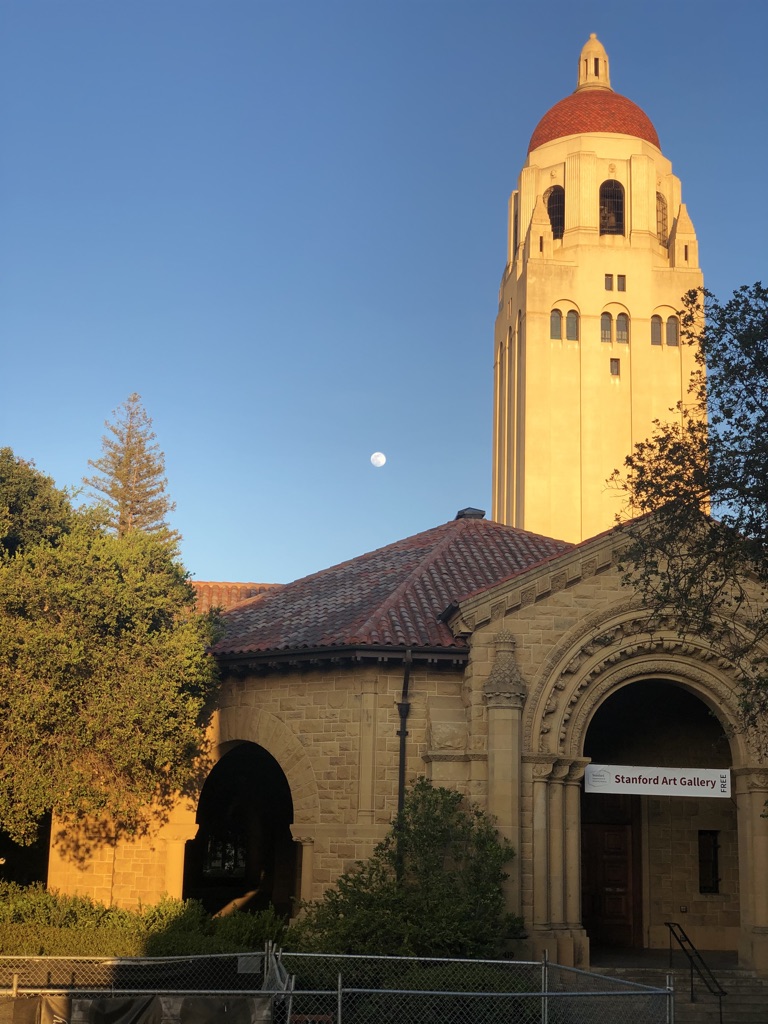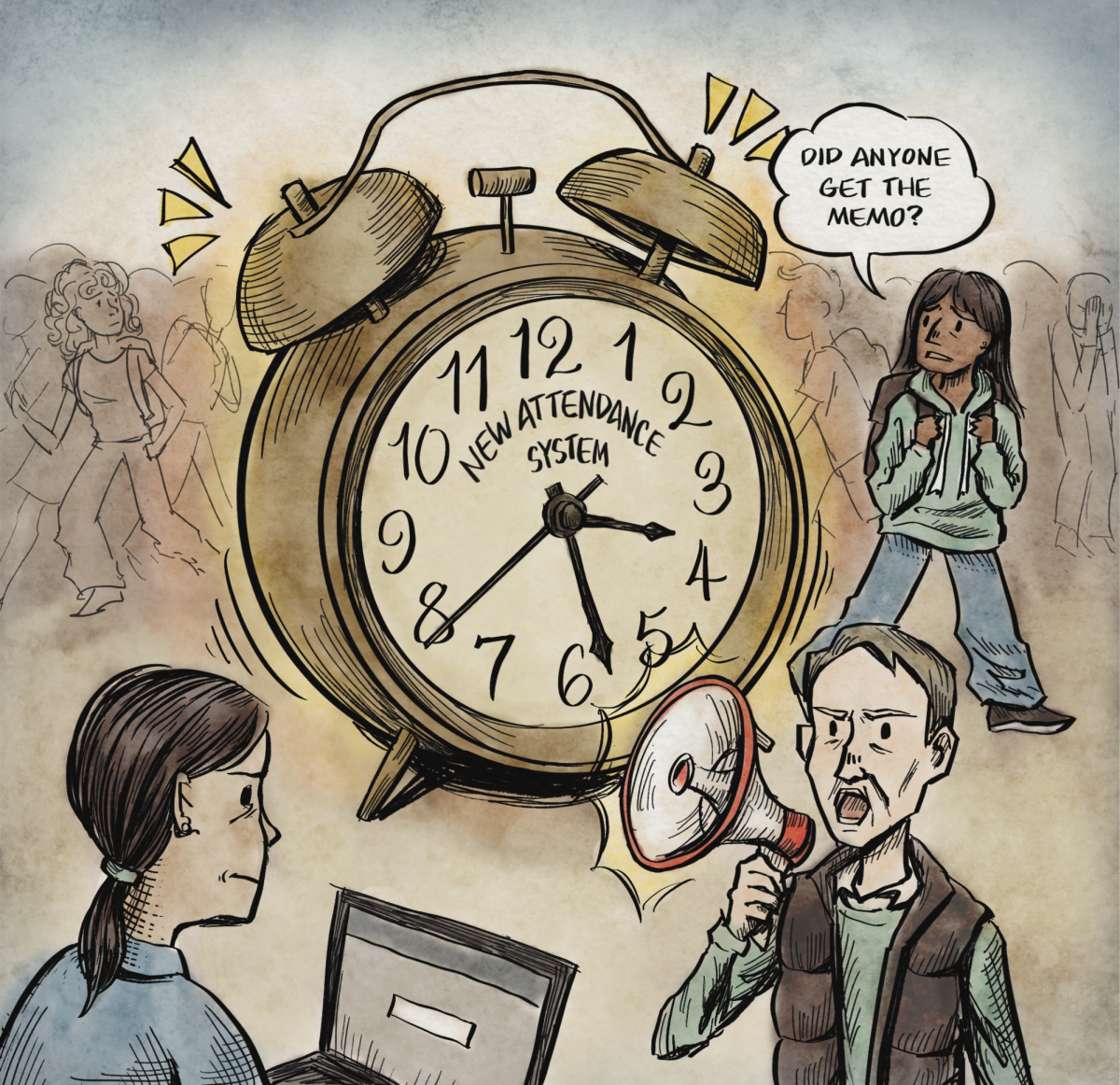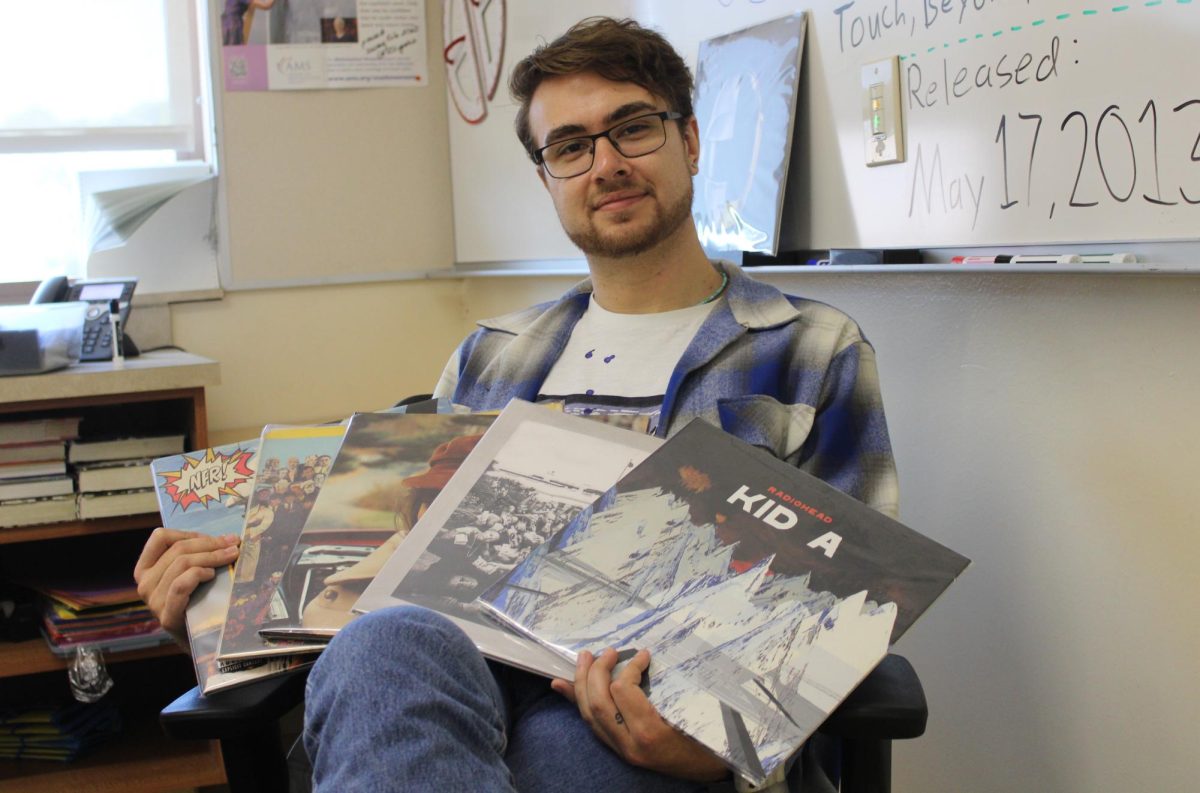PAUSD is the number one school district in California according to Niche, 24/7 Wall St. and countless other acclaimed organizations. It boasts of sky-high graduation rates, impressive standardized test scores and a plethora of elite college acceptances. Yet, this academic achievement remains unequally distributed among its students.
Low-income students and historically underrepresented (HUR) students have significantly lower graduation rates and standardized test scores, and are less likely to attend and graduate from college, according to California Department of Education.
Known as the achievement gap, this issue is prevalent throughout the nation. In PAUSD, it has been on the list of priorities for nearly 40 years, yet the District has not conquered the problem. Experts say issues of home environments and stereotyping remain impediments to success for many low income students of color, while PAUSD’s predominantly white and wealthy population paves a different path for those families. Even though the District has tried to tackle the problem for decades, with one committee after another, and a constant rotation of people in charge of implementing solutions, the District often seems to be spinning its wheels.
“[The achievement gap] is an age old issue that American education has not been able to solve,” said Keith Wheeler, the PAUSD Academic Support and Equity Initiatives Coordinator. “For Palo Alto, we are not unique. I think a lot of people say, ‘Wow, they’re part of the Silicon Valley, [PAUSD is a] super well-resourced district, there aren’t very many students of color, they can’t solve it?’ So a lot of people are scratching their brain to the side of their temples with this incredulous look saying, ‘If Palo Alto can’t solve it, can it really be solved?’”
[divider]How We Got Here[/divider]
In 1979, Margaret Tinsley, one of many parents in the Sequoia Union High School District upset with the lack of diversity in San Mateo County school districts. They filed a lawsuit against PAUSD and the state of California in effort to come to a settlement that would help alleviate racial segregation in the surrounding school districts.
According to the case file, Tinsley sought a “writ of mandate to compel the respondent elementary districts and others to submit to the court a reasonably feasible plan to eliminate or alleviate alleged racially segregated schools existing within those districts.”
They argued that, “The right to an equal opportunity for education and the harmful consequences of segregation require that school boards take steps, insofar as reasonably feasible, to alleviate racial imbalance in schools regardless of its cause.”
The resulting settlement was a “busing” program known as the Tinsley Voluntary Transfer Program (VTP). Students from the Ravenswood City School District, which serves East Palo Alto, could be brought by bus to attend schools in surrounding school districts.
“All the affluent districts were around a district that was not affluent and didn’t have the same resources so the students were not getting the same equitable access,” said Judy Jaramillo Argumedo, the PAUSD Director of Academic Supports. “All sides settled [through the Tinsley Order lawsuit] that we could begin to desegregate.
Although Tinsley was specifically looking for PAUSD to take in students, six other school districts also accepted students as a result of the VTP. The program admits students from kindergarten through second grade, who then can continue through their school years, and in the case of PAUSD, they can continue through high school. The program receives about 300 applicants every year and can take a total of 166 across the school districts, PAUSD being the most highly-requested, according to Argumedo.
Families apply to become part of the VTP program, and they must be a federally designated minority and live within the Ravenswood School District boundaries. At the same time, white students living in the Peninsula School Districts mayapply to attend schools in the Ravenswood District, but acccording to Agumendo, only two white students have exercised this option since the settlement in 1986.
Argumedo is in charge of meeting and placing the families taken into PAUSD.
“We meet individually with each family in the office,” Argumedo said. “We have what we call an orientation meeting in January; we meet all the incoming families. We introduce them to choice schools, we talk about the programs we have here, and we get them in the registration process.”
Argumedo helps the families from January through the beginning of March to start registering into the district, to help them meet the district standards for immunizations and settle in
Tinsley program families have the same opportunities as PAUSD families, in terms of enrolling their children in special programs like Young Fives or choosing one of the specialized elementary schools (Hoover, Escondido and Ohlone), or being placed at one of the other elementary schools.
“We have a dinner, they get to meet their principals and some of the [school] staff,” Argumedo said. “This office tries to develop a personal relationship with the families.”
The 2019 application for VTP is available from September 15 through November 15.
[divider]The Poverty Effect[/divider]
The socioeconomic achievement gap refers to the significant and persistent disparity in academic achievement between those who are, and are not, low-income. In this context, academic achievement is measured through graduation rates, state proficiency tests and standardized test scores.
There is a stark difference in academic achievement between the income groups at PAUSD. According to the California Department of Education, PAUSD students from low-socioeconomic status (SES) backgrounds have an 80.7 percent graduation rate and perform significantly worse on standardized tests and state proficiency exams than the district average. Comparatively, the overall graduation rate is 95.1 percent graduation rate.
“I think the gap that exists between even our average students and our students who are struggling is indefensible. So I think the first thing we need to do is speak about that plainly and directly and not to offer rationalizations. Unless people want to speak on that plainly, there will always be reasons why we shouldn’t do anything differently.”
Don Austin, PAUSD superintendent
This issue is not reserved solely for the PAUSD school district, however. The socioeconomic achievement gap is prevalent everywhere, with data showing its prominence at the state, national and global level.
According to the United States Department of Education (DoEd), SES students throughout California in the 2014-15 school year had a graduation rate of 78 percent, five percent lower than the state average of 83 percent.
The national socioeconomic achievement gap is even more drastic, with an overall graduation rate of 83.2 percent and a 76.1 percent graduation rate for SES students according to the DoEd’s 2014-15 data.
In an attempt to mitigate this problem, the federal government enacted the No Child Left Behind Act in 2002. The law, a reauthorization of the Elementary and Secondary Education Act, requires all states to test students in reading and math from third through eighth grade and once in high school.
The standardized tests provide data regarding student achievement, and aim to show the various disparities in student academic levels based on income, race and disability status in order to better target them.
According to various studies organized by the American Psychological Association, there are a multitude of reasons why SES students tend to be outperformed by their peers.
Their home environment, such as lower parental literacy levels, higher parental distress and fewer books owned all correlate to a lower initial reading competency level. Less affluent households also have less access to critical learning materials and experiences such as books, computers, stimulating toys, skill-building lessons and tutors. Furthermore, SES students are less likely to be exposed to informational resources regarding higher education.
Additionally, academic institutions play a larger, more critical role in academic achievement.
“Research indicates that school conditions contribute more to SES differences in learning rates than family characteristics do,” according to the American Psychological Association. “Researchers have argued that classroom environment plays an important role in outcomes.”
There are a multitude of psychological studies that support this. According to a 2011 study, “students who were randomly assigned to higher quality classroom in grades K-3 earned more, were more likely to attend college, saved more for retirement and lived in better neighborhoods.”
Additionally, children’s academic achievement is positively correlated with a teacher’s years of experience and quality of training; children from low-income schools are less likely to have well-qualified teachers, however.
[divider]Race Matters[/divider]
Racial and ethnic inequality in education has been a persistent problem in United States history. Although PAUSD participates in the Tinsley program in attempt to further its racial diversity, it is still made up of predominantly Caucasian and Asian students, according to the California Department of Education.
As a result, students of historically underrepresented (HUR) races can fall victim to stereotype threat, in which they feel that they are at risk of conforming to stereotypes of their racial group. As a result of how their peers and mentors evaluate them, these HUR students can undermine their achievement and conform to how they are expected to perform based off of media stereotypes.
For example, PAUSD students overall were assessed as performing “very high” on the 2017 Spring California Board of Education reports for math and English Language Arts performance of K-8 students. However, the performance of HUR declined from the previous year. African American, Hispanic and Pacific Islander students enrolled in PAUSD both performed “low,” whereas Asian and Caucasian students performed “very high,” and maintained their performance from the previous year.
Another aspect to having a small number of HUR students is that students don’t have mentors in the district that they identify with.
“One of the things that I do, because I’m Catholic, I can connect with some of my Latino students, if I find out that they are [Catholic too], Bloom said. “And then we can do things like have conversations, not about Jesus or anything, but the idea of saying, it’s just like, ‘Oh, do you get a confirmation name too?’ And it’s the idea of saying, even though we’re not the same, we share some similar cultural identity.”
Bloom says that the goal of making a connection to HUR students, who may not feel like they usually have connections in the classroom, is that they know that their teachers are people that they can relate to and identify with.
As a parent of a minority student in PAUSD, Argumedo spoke on how socially, there are some barriers that her daughter faced as a result of the culture.
“They always thought she was a VTP student,” Argumedo said. “She didn’t mind being classified as a VTP student, but what she was upset about is the myth about being one.”
Argumedo discussed how her daughter noticed that students often categorized HUR students as ones to be from East Palo Alto, and often, VTP students. The most common assumptions associated with being bloom is that one is low-income. Argumedo discussed how once students were assumed to be low-income, all sorts of other associations were made such as that their “parents don’t care,” or that those students aren’t as smart.
“Sometimes that happens, where students base your performance on your race, or at least that happened with my daughter. She didn’t get invited to all the study groups. There were some myths about who she was. It hurt after a while. The students are getting hurt and they’re not exactly sure why and so I think it does drop their confidence level.”
Judy Jaramillo Argumedo, the PAUSD Director of Academic Supports
[divider]Yet Another Committee[/divider]
“Sometimes you have to like speak a little louder so they can hear you, and it shouldn’t be like that.” The 2015 PAUSD Minority Achievement and Talent Development (MATD) Advisory Committee report to the Board of Education begins with this quote from a Latina sophomore from Gunn High School. The MATD Committee was created to carefully examine the root causes and consequences of the achievement gap, and implement recommendations to resolve the disparities in access, opportunity and achievement among students of low socioeconomic status and underrepresented minorities.
Members of the 2015 MATD Committee met 12 times from Dec. 2014 to April 2015 in public meetings and discussions that 10 to 15 community members regularly attended and in which a reporter was always present.
To identify the core problem clusters regarding issues impacting HUR students and SES students, the MATD conducted a district-wide survey and formed a series of focus groups. These subcommittees included Data Analysis, Best Practices, and District Practices, which examined academic outcomes in PAUSD by race/ethnicity and socioeconomic status, researched best practices in closing the achievement gap, and identified a number of the key district programs and practices that support historically underrepresented minority students and students from disadvantaged circumstances, respectively.
However, one flaw in this process is that each time a new administrator arrives, the previous committee is disbanded and a new committee is established. Though each of these committees produce valuable insight and work, they often arrive at the same conclusions, identifying similar problems and proposing similar suggestions.
“I think the turnover at the district leadership level has created all kinds of issues,” said Don Austin, the superintendent of the Palo Alto Unified School District. “It’s made it difficult to have any coherent plan. Things shift all the time, the same problems are seeing through different lenses. I value the work of previous committees, but less the work that comes out of that positively impact student achievement. It’s philosophical, and my nature is not philosophical. I’m action oriented. Right now, I have zero desire to start any new committee from this office. I have a strong desire to talk about leveraging impactful practices.”
The 2015 MATD identified five main problem clusters: underlying and unconscious narrative of bias, quality and nature of parent-student-school-community connections, instructional standards and accountability, identification and intervention structures, procedures, and policies, and inequitable access and mismatched needs of HUR and SES students.
[divider]Holding Ourselves Accountable[/divider]
To address these problem clusters, the MATD proposed eight recommendations for short-term strategies regarding: district accountability, professional development, human resources, response to intervention, laning, early education, parent engagement, and partnerships.
Though the MATD Committee recommended these various strategies, implementation has been unsatisfactory and insufficient, according to members of district and site administration, as well as students.
“I’m not sure that our district-wide execution has been good enough to positively impact the students who need our help,” Austin said. “I think the priority goals are perfect. I think our allocation of resources is better than most, [but] I think our execution and follow up and measurement of impactful actions is globally not good enough.”
[divider]District Accountability[/divider]
The PAUSD Equity Plan is designed “to guide the school district with implementing the [MATD] Advisory Committee’s implementation of its recommendations with a systemic process over the next few years … The PAUSD Equity Plan prioritizes the work and specifies specific milestones along the way with the accountability necessary to ensure progress.” The Equity Plan was developed by Academic Support and Equity Initiatives Coordinator Keith Wheeler, the district Equity Administrator hired to implement MATD recommendations.
“I took all of the work that had been done for the last several years from the MATD, from focus groups, to student interviews, to school presentations, to home visits. There were over 2000 hours I spent in the field, crafting understanding about how to make this plan a sought-out reflection of Palo Alto best practices.”
Keith Wheeler, Academic Support and Equity Initiatives Coordinator
The Equity Plan was passed on May 8 at a Board of Education meeting with a five to zero unanimous vote. According to Wheeler, the plan focused on three main areas: environmental equality, academic equity, and diverse personnel.
But even with the Equity Plan, making change is difficult. Not everyone agrees on which data is needed, or how often to collect it, or how to interpret it.
According to Barbara Klausner, the Executive Director of DreamCatchers, a tutoring program for low-income and HUR students, several members of the public, including parent advocate Sara Woodham, have asked the Board of Education to request reports with more meaningful numbers and breakdowns on a more frequent basis regarding progress, or lack thereof, regarding the achievement gap.
“At various board meeting discussions on this topic, several board members have suggested monthly report-outs, but that has not happened,” Klausner said. “Some board members have also suggested that principal performance measures include monitoring achievement gap numbers for each school. The notion is not to point fingers so much as to help set priorities for administrators who have multiple goals. If a district strategic plan and/or board directive says that this is important, then it is no longer a discretionary decision. It’s all aligned with the notion that we should measure what matters. If it matters, let’s measure and monitor progress.”
The district is currently analyzing data regarding standardized testing scores and evaluating whether or not goals for state benchmarks and local priorities have been met. Performance levels will be determined and available on the CDE, presented as gauges, instead of the previously depicted pie charts, according to Kolar.
[divider]Training Teachers[/divider]
Equity and unconscious bias training in professional development has become another area in need of focus.
According to Navarro, some teachers automatically assume that HUR students do not have the potential to succeed in a class on their own, making special accommodations for those students even though a student may not need or want the extra help.
“I remember being in the ELA class when I didn’t need it. They realized … towards the end of eighth grade, [that I] never needed this class. I could have been taking a whole other elective instead of being in this class, but [they] decided that, because I’m an ‘English Language learner,’ that I needed this class when I didn’t … It all comes down to how teachers approach us and how they see us.”
Giselle Navarro, senior
Last year, according to Wheeler, 25% of PAUSD staff trained with the PAUSD Equity team. Wheeler presented and facilitated professional developments regarding equity, as well as offered an equity lecture series, in which researches from colleges, universities and different agencies from across the state and country attended and provided professional development and learning opportunities to the district.
“We focused a great amount of professional learning on instructional strategies, and really making sure that classroom instruction was really improving student learning for all students,” Diorio said. “I think there’s a lot of professional learning that’s been done around unconscious bias, and even just having conversations about race and inequities… [However,] there’s still a need to do more. I think it’s an ongoing thing.”
[divider]Diversifying Staff[/divider]
Currently, at PAUSD school sites, teaching and administrative staff does not accurately reflect the diversity and demographics of the student body.
According to senior Giselle Navarro, without many teachers and adults on campus that identify as minorities, HUR students continue to feel isolated. Crystal Laguna,Outreach Specialist and Community College and Career Advisor, and Ms. Mendoza, the L-Z college advisor, are the only two people at Paly Navarro said she can go to on this campus.
“One of the biggest things that I would like to see at Paly change is probably having teachers that actually look like me [and] having teachers that you can share something [with],” Navarro said. “Just being able to go to that teacher [and] just being able to connect with somebody on campus and feel comfortable… Being able to have teachers that actually look like you would really touch me.”
Wheeler said that he currently working on addressing this issue by creating a human resources recruitment tool, as well as developing the Human Resource Recruitment and Retention plan.
“[The] human resources recruitment tool has very specific outreach efforts for us to retain some of our most highly capable and highly functioning leaders that are prepared to come into the world of education in Palo Alto,” Wheeler said. “Although our district becomes is continuing to become more diverse, our hiring practices are not necessarily reflecting that. This is a very strategic effort [that outlines] the very specific steps that our district is going to take.”
[divider]Response to Intervention[/divider]
According to the RTI Action Network website, Response to Intervention (RTI) is a “multi-tier approach to the early identification and support of students with learning and behavior needs.” Tier I consists of high-quality classroom instruction, screening and group interventions which all students should receive. Tier II encompasses targeted interventions for students not making adequate progress in the regular classroom under Tier I. Tier III involves intensive interventions and comprehensive evaluation that focus heavily on students’ skill deficits.
According to Wheeler, RTI squared includes both response to intervention and response to instruction, a practice is currently only established at the elementary level. Secondary programs are slowly developing in this area, but have not yet reached a system.
“There is some professional development that’s going on right now to kind of teach and then hopefully implement some form of RTI at the secondary level right now,” Wheeler said.
“The other thing is that some of the specific things, like the intervention program for reading, one of the things that we discovered was that we do not have in place tracking at the level of detail that will allow us to figure out what was and wasn’t working,” Kolar said. “We’ve developed some tools out of my department that is helping us track students who are at risk and once we start to establish more data, we’ll be able to say which things are working and which aren’t. That’s something that you don’t necessarily see right away, because it took a while to get things in place, but you’re changing practice.”
[divider]The Trouble With Laning[/divider]
Laning is another strategy discussed by the MATD that has not beared enough fruit, yet is very influential regarding students’ future classes and success.
“We made some strides,” Diorio said. “The idea of laning is opening access so that people have freedom to choose which classes they want to take, making sure that they’re making more well-informed decisions [and understand how] choosing this class impacts you down the road. I think the district’s been more transparent in terms of math placement. I know there’s been a lot of effort done at the middle school level when those decisions are made.”
In PAUSD, in 7th grade, based on the evaluation of 6th grade teachers, students are laned into different math courses: Pre-Algebra 1, or Pre-Algebra 1A. Though simply laning into one of two different courses may seem fairly insignificant, whether or not a student begins in an advanced lane in middle school can greatly impact a student’s course choices and learning experiences in following years. However, according to Social Justice Pathway Teacher Eric Bloom, the effects of laning are not always as obvious as they seem.
“What we don’t realize when we create so many AP courses [with weighted GPA], is this idea of de facto laning.”
Eric Bloom
De facto laning is where students are put in classes with a similar group of other students as a specific result of a laned course. Bloom makes an example with a graduation requirement that all Paly seniors are required to take: economics.
“What you see is that the econ class, where there’s a BC Calculus class at the same time, looks very different [demographically] than the econ class at other times,” Bloom said.
With this shift in classroom demographics, early laning can hurt the diversity of classroom demographic starting at as early as 7th grade.
“Different departments have had a lot of conversations with mixed results around how [we can] reach out to and get more students in our [advanced] classes,” Diorio said. “Even where we’ve opened up the lanes and we’ve directly encouraged kids to come in, how are they doing once they’re there? We’re not seeing as many [students that] are choosing AP or honors courses as we’d like to, so we still have work to do around that, but I think there’s general consensus that getting students into more rigorous courses is good all around.”
Last spring, the district co-sponsored a family fair with Palo Alto Housing, a provider of low-income, affordable housing in Palo Alto, at JLS. The district effort was led by Argumedo and Wheeler, and about 200 people attended. Suz Antink, former Paly math teacher and district secondary math Teacher on Special Assignment (TOSA), led several sessions that explained the secondary math lanes, presented in both English and Spanish.
However, many students also do not choose advanced or honors courses, regardless of whether or not they are recommended to enter a certain lane, because they do not feel that they would belong.
“A lot of us don’t want to take higher classes, because, going back to stereotypes … [other students may think] ‘oh, why are they in here?’ We get anxious. And we feel that we don’t belong there. There are no students that look like us in that class, the teacher doesn’t look like us … I wanted to take AP’s here, but I just stuck to the main course classes because I don’t feel comfortable walking into a class where I’m the only student of color. I know I can do [well], but because there are other people surrounding me that don’t think that I will. [They’re] targeting us and making us feel that we don’t like actually belong.”
[divider]Early Education[/divider]
The school district has established full-day kindergarten at all elementary schools and has implemented Young Fives, a springboard-to-kindergarten program located at Greendell School.
According to Kolar, this transition into full-day kindergarten will be important in data collection and monitoring the progress of students throughout school.
“What’s kind of exciting is that … when we switched over to full-day kindergarten in 2016, we froze all those kindergarten kids as a group, and we’re tracking them as they move through kinder, first and now second grade,” Kolar said. “That’s called a professional learning community. What they’re doing is now getting to know who those kids are, because we’re seeing them over a long period of time. We’re seeing how the changes happen over time … we’ll start to see where something might happen, that maybe we should address. That came directly out of the MATD because we were going to extend kindergarten to full-day. That was a research-based decision. We had a theoretical framework for why that would be a good thing.”
[divider]Involving Parents[/divider]
“There’s a data point, it came from a research article, and it said 50 percent of a student’s success is based upon a parent’s level of engagement,” Wheeler said. “[It’s important that] you have somebody that you’re comfortable with and you have somebody that you trust.”
After the MATD report, according to Klausner, the district increased their efforts to connect with parents, especially HUR parents.
Currently, there are three full-time and five part-time family engagement specialists that are deployed throughout the district, according to Wheeler. These specialists support parents in terms of their online access, meeting with parents, performing home visits, sit in IAP’s, sit in 504’s, offering interpreting services, facilitating professional trainings and arranging meetings between families and the principal to understand challenges a student may be experiencing on campus.
One large challenge that parents and families often face is a language barrier. This barrier fosters uncomfortableness in parents who do not speak English, and inhibit them from obtaining the resources and advice they need to help their children succeed.
“I think a lot of our parents, because their English isn’t good, they’re scared to approach the school or to embarrass their student because they don’t know English, or basically being targeted by other parents,” Navarro said.
As a result, Navarro has to take on the responsibility of relaying important information, from class selection to graduation requirements, to her mom.
“Because my mom is Spanish speaking, she doesn’t really know [what to do]. I have to be able to explain classes to her. So when it comes to taking a certain class, I have to create my own schedule. She never logs into Infinite Campus, look at the emails or look at the grades. When it comes down to teachers and surveys, or classroom attendance, I get the information, I try to understand it. And then, I deliver it to my mom in a way that she can understand it.”
Giselle Navarro, senior
According to Wheeler, family engagement specialists are a step towards lessening the language barrier.
“Many of our [family engagement specialists] are Spanish speaking, so they have direct routes with the community,” Wheeler said. “They offer that connectivity and personal relationship and really build that bridge between many of our families that have a language barrier. They really serve as a nexus, a connecting point between the home, the community and the school.”
However, currently, there are not enough family engagement specialists to even have one at each school — just one may not be sufficient, either.
“My mom understands English, but she can’t speak it very well,” Navarro said. “She has only one person on campus that she specifically go to and ask a question about, what’s going on about campus? Or, how can I help my child do this? There [are] definitely limited resources.”
Furthermore, not only is the language barrier an issue, but parents may also often be unable to attend school events, preventing them from attaining important information.
“My mom, for example, works two jobs, so she can’t always come to the school activities,” Navarro said. “So, like back to school night … I don’t hear what my teachers have to say, because my parents work [and can’t go]. So all that information that the teachers are going to say to parents, I will never hear.”
According to Wheeler, the district is planning to hire another full-time family engagement specialist.
“We’ve done more outreach to try to make sure families know about our events, that the information is accessible, that we have translation services and we’re trying to welcome all families on our campus and get them more involved,” Diorio said. “I think the engagement specialist that the district places on all the campuses has been a good step in the right direction. Just helping parents navigate the system [is important].”
[divider]Partnerships[/divider]
One notable partnership within the district is with DreamCatchers, a tutoring program dedicated to providing customized academic support and opportunities to low-income and HUR students. Twice a week, Stanford tutors and highschool student volunteers work with students one-on-one to help them manage school work.
“What we’re trying to do is really provide that make up for some of that social capital that’s not there. That means helping the kids and the families figure out how to, at a minimum, navigate the school system — to know what’s important and what’s not, to start to recognize and for the kids take responsibility for when they may be going off track — because if you’ve never experienced that you don’t know what it means to have fallen off the track.”
Barbara Klausner, the Executive Director of DreamCatchers
DreamCatchers collaborates with the district to make resources more accessible to HUR families, connecting families to schools and with helpful personnel. According to Education Director Heidi Mickelsen, DreamCatchers ensures that their families are aware of various aspects, including laning and course pathways, including in math, as well as the A-G requirements for college.
“[We’ve] worked pretty hard to make personal connections to classroom teachers and counselors,” Klausner said. “For example, IT comes to do Schoology/IC trainings in Spanish for our parents. High school counselors come to talk to our parents and students when they are eighth graders. We’ve partnered with AAR and Social Justice Pathways. We have PAUSD teachers come to help run some of our after-school sessions; the kids love it.”
According to Mickelsen, DreamCatchers facilitates these workshops and events in both English and Spanish, thoroughly teaching parents how to access and navigate important resources.
Moreover, an important focus of DreamCatchers is providing for students what they may not be able to receive at school, in class, and building a solid foundation of knowledge to allow students to more easily digest new information.
“Just because the classroom and all the resources are there doesn’t mean learning is going to happen,” Klausner said. “You still have to figure out how you’re going to connect that student and that family with the system in a way that works for them.”
“One of the things [we’ve] tried to focus on is filling in the gaps that they [students] might have,” Mickelsen said. “There’s no place once they get to middle school for them to really re-learn the things they didn’t learn in elementary school. We have things in place place every week to build into those gaps a little bit. So then, when they actually learn new content, if we can fill in some of those gaps in the foundations, yeah, then the new content makes more sense for them. We want to be able to provide those sort of things that the schools just don’t have time and resources to do.”
This year, the district is funding a pilot mentoring program for DreamCatchers to help current freshmen transition into Gunn and Paly. One of the objectives is to provide the district with a more three-dimensional, up-close perspective of the experiences of low-income, HUR students and their families. DreamCatchers Program Director Miguel Fittoria is in charge of the pilot, and meets with students every week for an academic check-in.
“It helps that we’ve been working with almost all of these students and their families throughout their middle school years and have built up a strong, trusting relationship,” Klausner said.
DreamCatchers believes that it is a privilege that they are able to connect the various facets of a student’s success, creating an elaborate system of support.
“We are at the center of a incredible communication, social relationship network. That’s what’s so great about DreamCatchers … This whole system that we have set up of communicating with classroom teachers and counselors gets more and more robust every year … a lot of what we’re trying to do is strengthen that web … It’s really all about building relationships and trust. And then once you do that, you’ve created that network of support for the students.”
Barbara Klausner, the Executive Director of DreamCatchers
This involves not only aiding families and students in regards to the academic aspect, but also fostering a sense of community and belonging for families.
“If you look at the demographics of this district, [these families] are marginalized, just based on those demographics: the fact that they can’t communicate easily in English, the fact they don’t understand how the school system works,” Klausner said. “DreamCatchers is a place where they actually feel comfortable to talk about it as a third space or hybrid space, where you can be both kind of low-income, Latino, first-generation, immigrant and you can be in Palo Alto Unified and it all comes together.”
Twice a year, DreamCatchers hosts a family potluck celebration, which contrasts from a normal Paly event in the way that HUR families feel comfortable being present, according to Mickelsen.
“It was just this incredible feeling to be here on a PAUSD campus in a fabulous space with all these families who are Palo Alto Unified families,” Klausner said. And, for once, they feel comfortable. You have to have the sense of feeling secure and comfortable, and feeling supported.”
“I think [families] just love feeling like, ‘Hey, we actually belong to something, and there’s going to be people from our cultural there,’” Mickelsen said. “It’s just a great opportunity for them to be part of the school. So even though that [might not have] measurable academic results, I think they really love feeling like there’s a place for them inside this school, where normally there isn’t.”
As DreamCatchers is continuing to tutor and help students, as well as create a supportive environment for families, Wheeler said he is currently working on several other district partnerships with various organizations.
“I am in the process of formulating the first African American Parent Alliance Council, [in which] African American families across the district are getting involved and making contact throughout the district,” Wheeler said. “We’re also looking at partnering with Stanford fraternities and sororities that are from a historically underrepresented organization, they call them the Divine Nine, [and] looking at bringing them into do workshops or presentations throughout the district. It’s about establishing connections and different opportunities throughout the district.”
Furthermore, Diorio said that a partnership similar to that between the YMCA and the Los Alto School District would be beneficial. The district runs their summer school in partnership with a YMCA, creating an environment where students can both have fun and improve their academics.
“That’s the kind of partnership I’d like to see more of,” Diorio said. “It’s an opportunity, so if you’re a low income student who doesn’t have the funds to go to summer camp, you’ve now been provided with a free summer camp thanks to that partnership with YMCA. I think we’ve got some good partnerships, but, again, we can always use more.”
[divider]What’s Next?[/divider]
Although the MATD work provided important insights, and the Equity Plan is a step in the right direction, more progress is needed.
“[The achievement gap] is important, it always is, but it’s not urgent, meaning there’s no big pressing for it,” Bloom said. “This keeps getting pushed aside.”
PAUSD Director of Academic Supports Argumedo said MATD increased the attention devoted to the issue, and that gives her hope.
“It was everybody raising the issue and I think that students got more involved, and I have seen for the first time that the students are really caring,” she said. “I think that the community is really rising to handle some of these things.”
In order to make tangible change to the culture that underlies the persistent achievement gap, she added, PAUSD needs to engage the community in more conversations about race.
“We need to engage students themselves,” Argumedo said. “We need to look at groups, such as clubs, and see if they reach out. Every time I’ve had conversations with the students, they do [reach out], but are we having those sorts of conversations with students, teachers and admin? I know these race conversations can be uncomfortable, but I think we really have to have these uncomfortable conversations to really get at how to make improvements, and making it a safe place for everybody.”



















